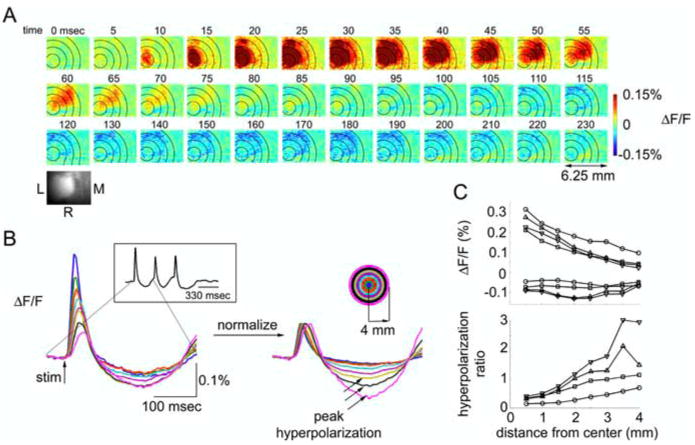Figure 2.
Voltage-sensitive dye measurements of neuronal activity. A, Spatiotemporal evolution of VSD signal in response to the first of the three stimuli in a train. Time (in milliseconds) relative to stimulus onset (t = 0) is indicated above images. One hundred trials were averaged. The images were spatially smoothed using a Gaussian kernel of 120 μm full width at e −1 of peak amplitude. The color scale is expressed as fluorescence percentage change relative to the baseline (ΔF/F ). An image of raw vasculature corresponding to functional frames is shown in the lower right corner. L, Lateral; M, medial; R, rostral. B, Signal time courses extracted from 0.5 mm concentric rings around the center of the response. The center was estimated using the earliest response (t = 10 ms). The signal time course in response to the first stimulus in a train of three is shown (see inset on the left). The rings are superimposed on images in A. Every other ring is shown. In the right panel, the initial depolarization for each ring is normalized to 0.1%. Black arrows label peak hyperpolarization. The inset on the right shows the color code. C, Peak depolarization and hyperpolarization (top) and the hyperpolarization ratio (bottom; see Results) as a function of distance from the center. Data from four animals are superimposed (circles, squares, upward triangles, and downward triangles).

